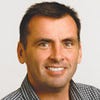Outlook 2013: IT Is Still Too Internally FocusedOutlook 2013: IT Is Still Too Internally Focused
Tech spending is looking up, but IT must focus more on customers and less on internal systems.


information Green - Dec. 10, 2012

information Green
Download the entire Dec. 10, 2012, issue of information, distributed in an all-digital format as part of our Green Initiative(Registration required.)
We will plant a tree for each of the first 5,000 downloads.

Outlook 2013
Our Outlook 2013 research identifies an unmistakable trend: IT demand and spending are continuing to rise from the recession years. Heading into 2010, less than half of companies in our survey were seeing rising demand for IT projects, about one in five was cutting IT staff and only 46% expected their IT budgets to increase. Today, 71% see rising demand for IT projects, just 8% are cutting IT staff and 60% expect higher IT budgets than in 2012. It's also promising that our 728 survey respondents say their companies are planning an average of 5.5 major IT initiatives for 2013.
But therein also lies the problem. IT organizations' priority lists continue to trend toward IT-centric projects. Every year, their budgets and staffs are geared toward making IT more efficient versus addressing the changing customer and technology landscape.
Two-thirds of projects planned for 2013, such as network infrastructure, security and storage, are decidedly IT-centric. About a fourth aren't focused on IT-centric efficiencies but are still internally focused, projects such as ERP and data quality. The remaining 11% of projects focus on customers -- building IT-led products, creating mobile apps for customers and improving big data programs, for instance.
For all the talk about IT professionals being customer-centric -- that is, getting out of the cubicle and being the true innovators within the company -- for the most part, they're not. Infrastructure, security and storage improvements are indeed important, but their importance is dwarfed by technology trends happening outside of the IT department.
In the same four-year period that IT spending and demand have clawed back from the recession, cloud computing has emerged as commonplace. Widespread use of smartphones and Web apps has made customers and fellow employees more tech-savvy and demanding. In that time frame, the iPad went from nonexistent to more than 100 million sold, and Facebook went from 300 million members to more than 1 billion. People are spending more time interacting online, and that carries over to business -- consumers shop, research and complain more online, and employees want to collaborate with colleagues more online. That interaction includes a steady migration of brick-and-mortar store sales to e-commerce sales.
 Our full Outlook 2013 report is free with registration. The report includes all our survey data on IT project plans and expectations plus additional analysis.
Our full Outlook 2013 report is free with registration. The report includes all our survey data on IT project plans and expectations plus additional analysis.
Get This And All Our Reports
And our IT leaders' top priority for next year is infrastructure? When we asked survey takers to identify their company's top two IT projects, upgrading the network was cited most often (by 22%) -- far ahead of introducing IT-led products (13%) or creating mobile apps for customers (6%).
Our Outlook 2013 Survey also asked IT pros how their companies view the IT organization. Only 15% say their companies view IT as a core part of their vision and strategy. Another 45% say it's part of the strategy, but not core. The rest say IT is relegated to tactical silos -- 14% of respondents think they're just keeping the lights on or they constantly face budget cuts.
We need to see dramatically different results. To illustrate why, this article highlights four technology trends at the tipping point: consumerization, tablets, cloud computing and e-commerce. We'll look at why an IT organization will either ride these trends to growing importance or become obsolete. And we'll offer four slightly unconventional ideas for changing IT's place in the company.
To read the rest of the article,
Download the Dec. 10, 2012, issue of information
About the Author
You May Also Like






